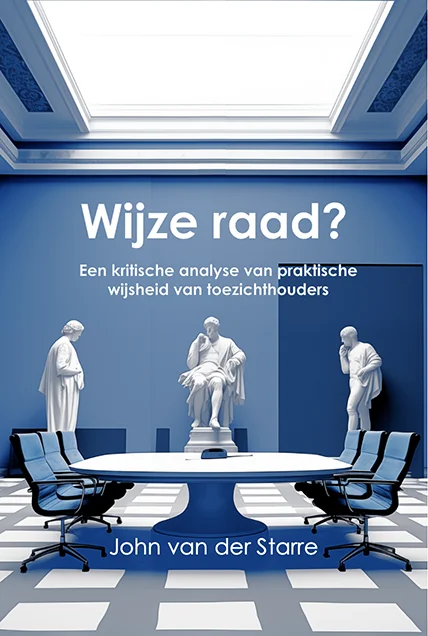A general definition of corporate governance is that it is about the study of power and influence over the decision-making in the company. So where are the decisions made? In the boardrooms! In my book ‘Drama in the Boardroom’ I argue that from a dramaturgical perspective board meetings can be seen as a performance and, as in every performance, staging is a critical element of that performance. On January 26, I had the pleasure of attending a dinner on the occasion of the book presentation by Jacqueline Hassink. Her book supports my argument.
Jacqueline’s book ‘The Table of Power 2” contains (magnificent) photo‘s of the boardrooms of 29 of Europe’s largest corporations. It’s a beautiful book and in the introduction by prof. Annegret Pelz (University of Vienna) the power of the boardroom table is described as follows: ‘the institutional (i.e. equipped with normative powers) “power “ of the large conference table also stabilizes and structures the social situation in the room’. Thus, the book is about Corporate Governance. The social situation, which is created when the board meets at the table, is all about power and influence. Who sits where, who is invited and who isn’t? Take for example the boardroom table of Banco Santander, inscribed mats with the names of the present and former directors sitting at that same place are placed on the table. Or, consider the boardroom setting of Lukoil. The chairman of Lukoil is seated on a chair that is distinctively different from the other chairs. Jacqueline writes the following about the philosophy behind the oval shaped boardroom table of Lukoil: The idea behind the oval form is that there is a centre from which the members of the Board are at equal distance. The design of the boardroom table reflects the corporate philosophy of the company. Who wants to argue that there is no drama in the boardroom?
For those interested in corporate governance and willing to take a look at boardrooms from a different perspective, I would highly recommend The Table of Power 2.
The presentation took place at Huize Frankendael in Amsterdam. It is one of the last manor houses in Amsterdam. Interestingly, the house was built in the period when the Dutch East India Company was incorporated, the first public company! It was therefore an appropriate setting.
The Table of Power 2 is beautifully designed by Irma Boom and contains texts by Michiel Goudswaard (ed. Financieel Dagblad). Prof. dr. Annegret Pelz and Jeroen van der Veer. It’s published by Hatje Catz Verlag in Germany.

